
Birds Around Las Vegas, Wildlife Around Las Vegas
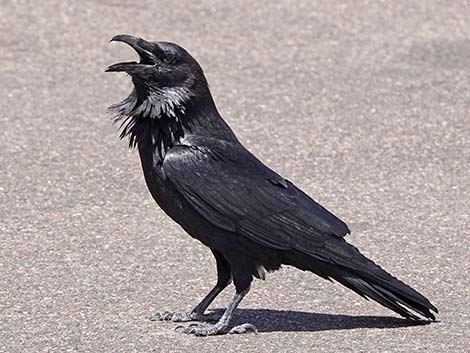 Common Raven with heavy bill and shaggy neck feathers |
General Description: Common Ravens (Corvus corax) are large, all-black birds (to 24 inches total length) with a long, delta-shaped tail, a large heavy bill, and a shaggy ruff of feathers around the throat. Ravens are desert birds that usually fly in pairs or small family groups. American Crows, with which they are often confused, are smaller, more social, and fly in great flocks in agricultural areas. However, I did see one great flock of ravens in the White Mountains of California where we estimated that some 10,000 ravens were flying together and settling in for the night to roost in a Pinyon-Juniper Forest. I have no idea what so many ravens were doing, probably migrating, but I've never heard of such a thing elsewhere. Taxonomy: Passeriformes, Corvidae. |
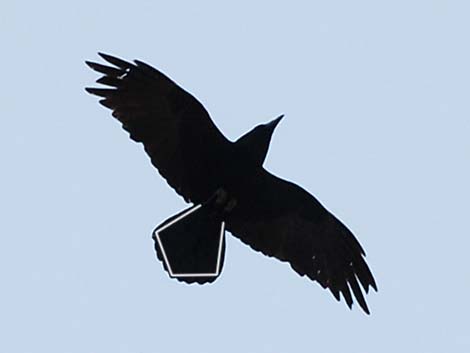 Common Raven; note the deltoid tail (even if not the best example) |
Comments: By human standards, Common Ravens are considered the smartest of all birds. Native peoples called them "Trickster," and items they lost or misplaced often were blamed on the Trickster. Common Ravens are playful and often turn over and fly up-side-down. They can also be bold and aggressive when defending their nests or when trying to get food from campers. Common Ravens do fairly well around human habitations in desert regions because they are adept at scavenging food from around homes and dumps, and because they fly along roads and pick up roadkill carrion (dead animals). While most species decline in numbers when humans move in, Common Raven numbers probably are higher now than ever before. This is good for Ravens, but they predate other species, so overall this might not be a good thing. Some people blame Common Ravens for the decline in Desert Tortoise and advocate killing Common Ravens because they eat tortoise hatchlings, but the concern is overblown. |
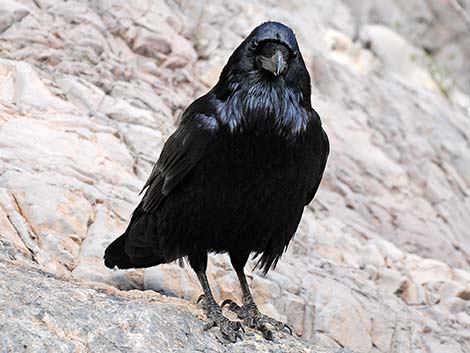 |
If you were just about anything edible, this might be the last face you ever see! |
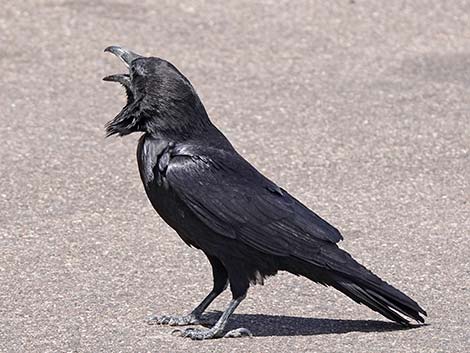 Common Raven with heavy bill and shaggy neck feathers |
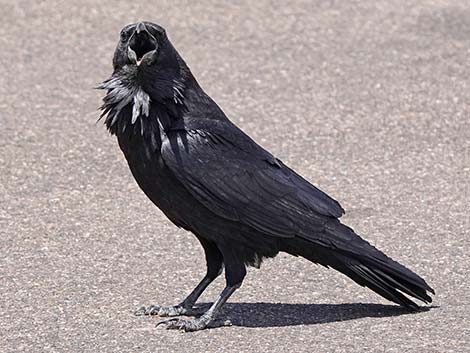 Common Raven with heavy bill and shaggy neck feathers |
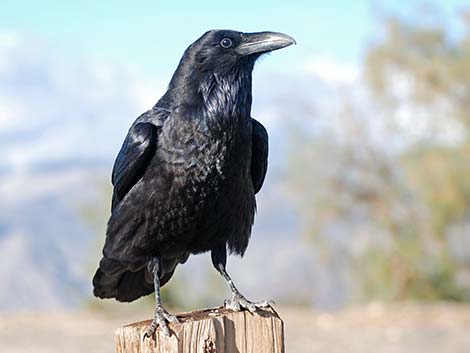 |
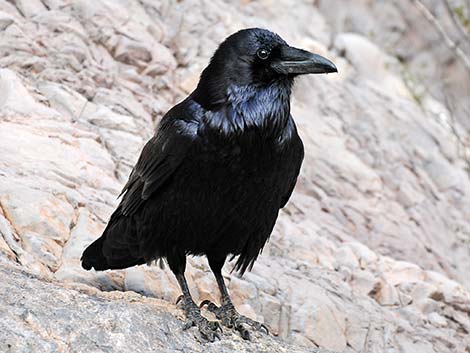 |
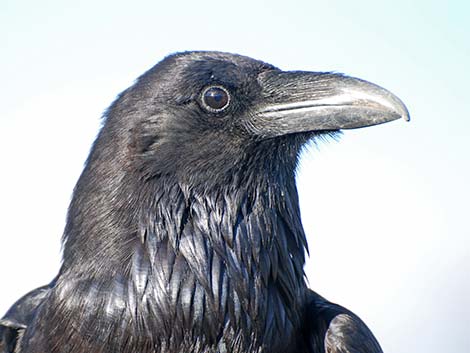 Common Raven with heavy bill and shaggy neck feathers |
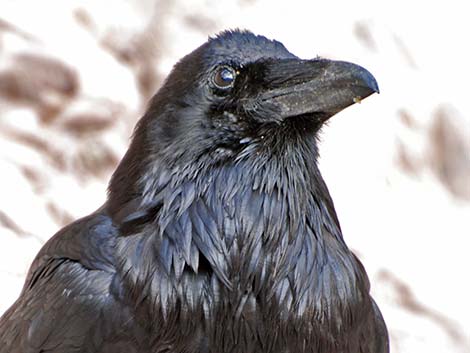 Common Raven with heavy bill and shaggy neck feathers |
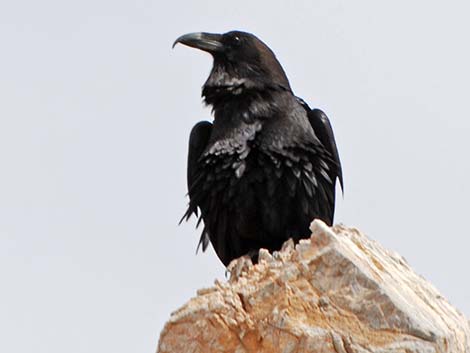 |
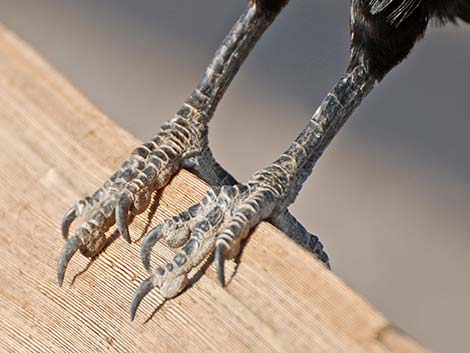 |
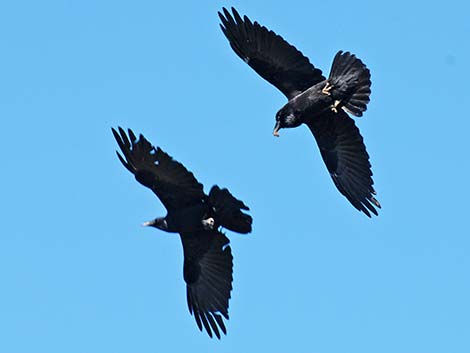 |
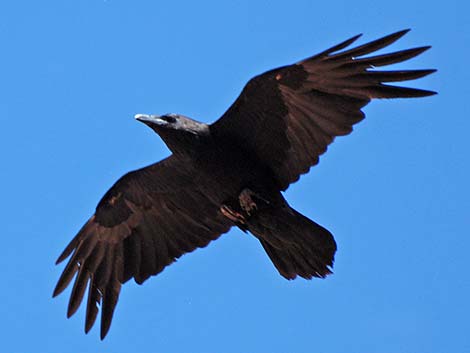 |
 Common Raven coming in for water left footprints in wet sand |
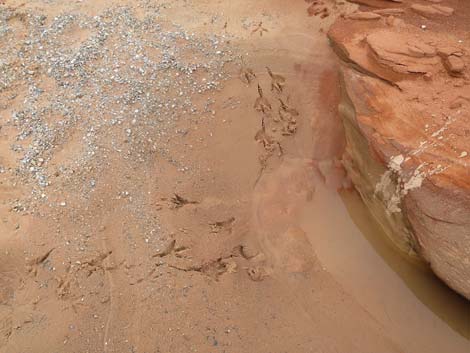 Common Raven coming in for water left footprints in wet sand |
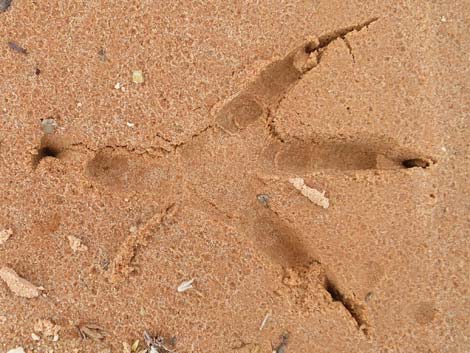 Large footprint of a Common Raven in sand |
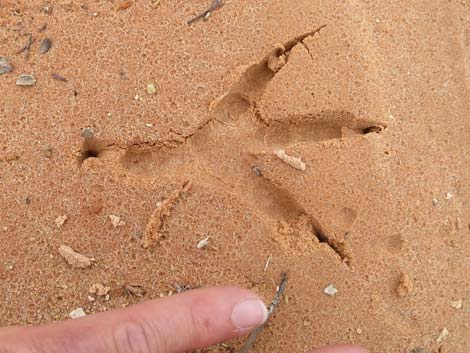 Large footprint of a Common Raven in sand (finger for scale) |
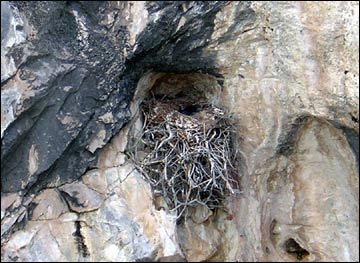 Raven nestling hunkered down in a stick nest on the side of a cliff |
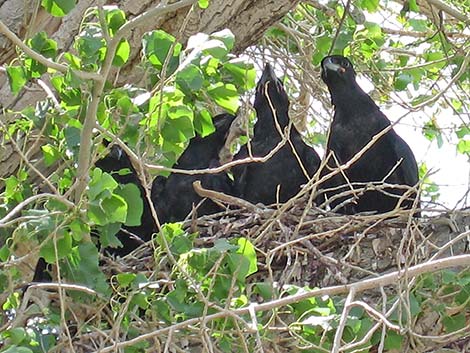 Four Common Raven nestlings in stick nest in a cottonwood tree |
 Common Ravens often nest in high-tension electrical towers |
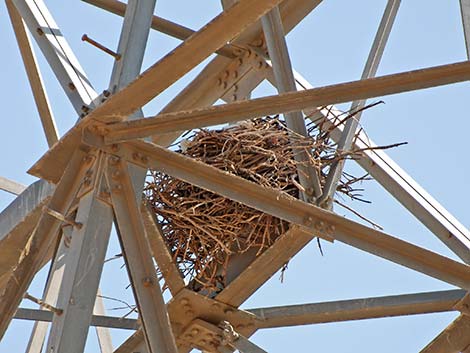 Close-up of Common Raven nest in tension electrical tower |
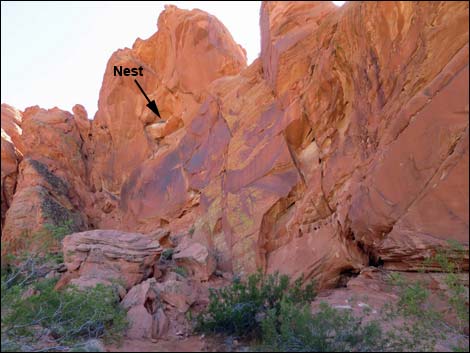 Nest on red sandstone cliff |
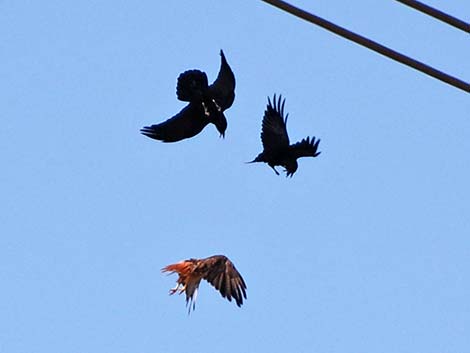 Common Ravens harassing a Red-tailed Hawk |
Note: All distances, elevations, and other facts are approximate.
![]() ; Last updated 240704
; Last updated 240704
| Songbirds | Birds Around Las Vegas | Wildlife Around Las Vegas | Glossary | Copyright, Conditions, Disclaimer | Home |